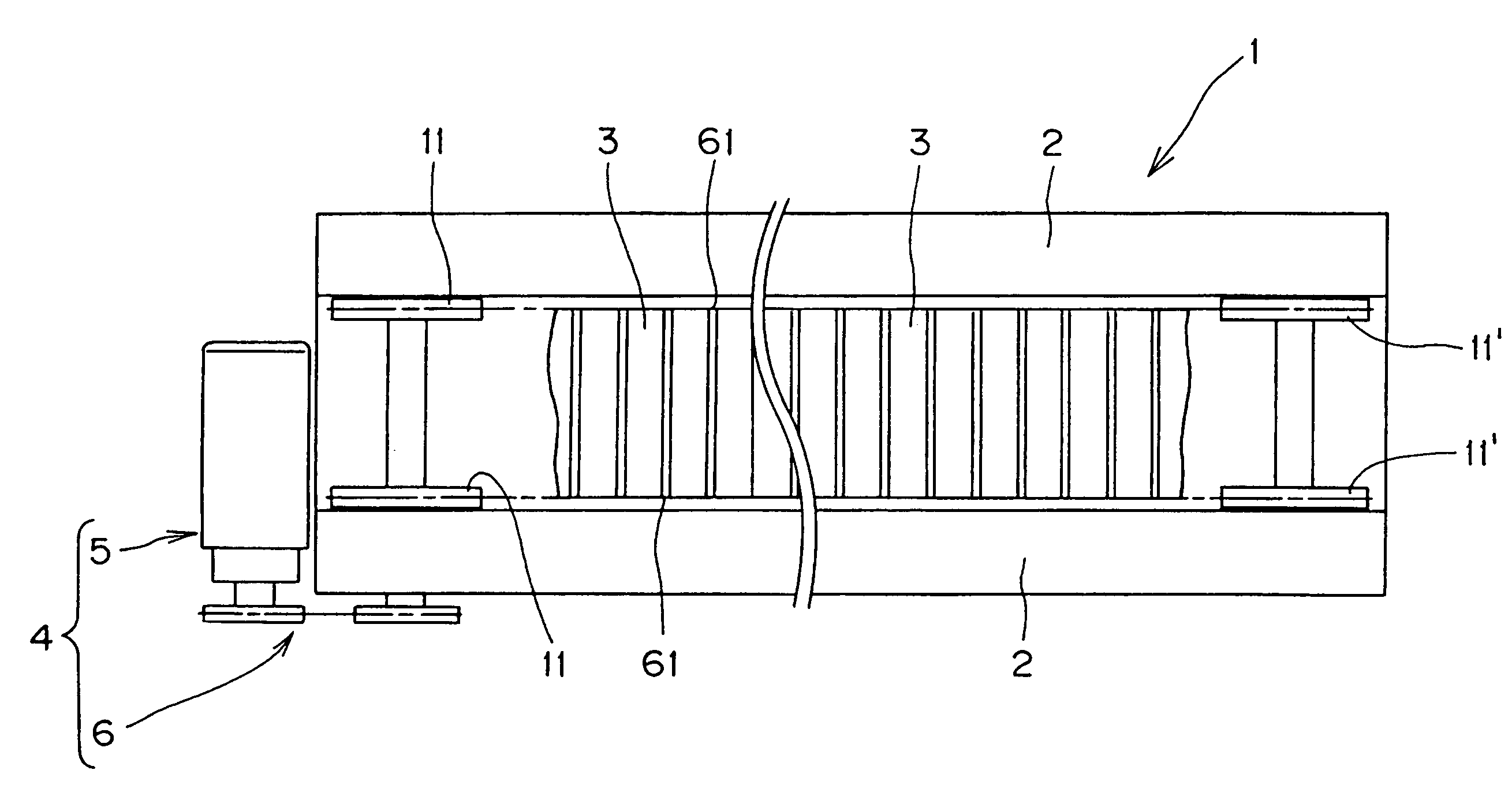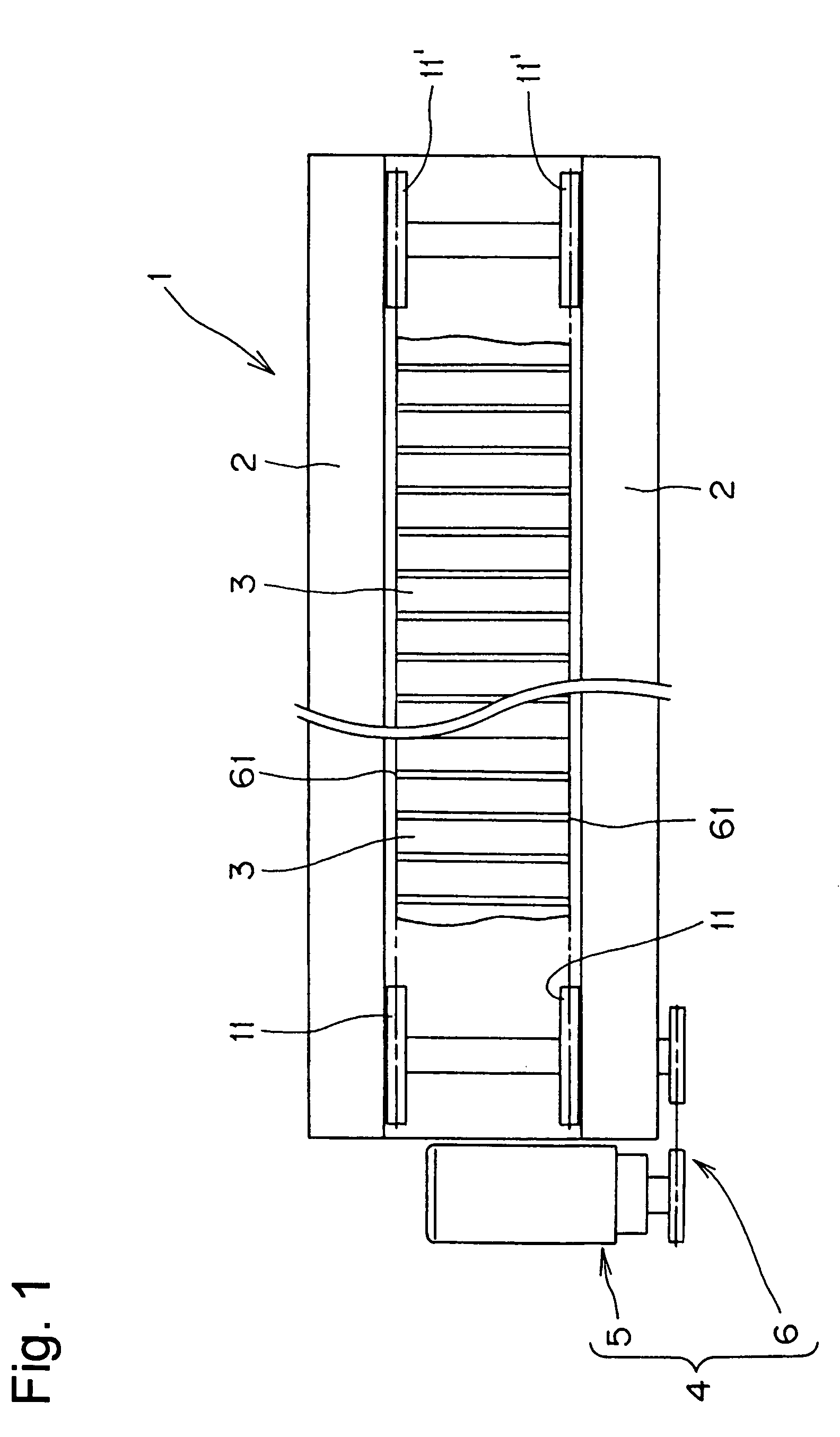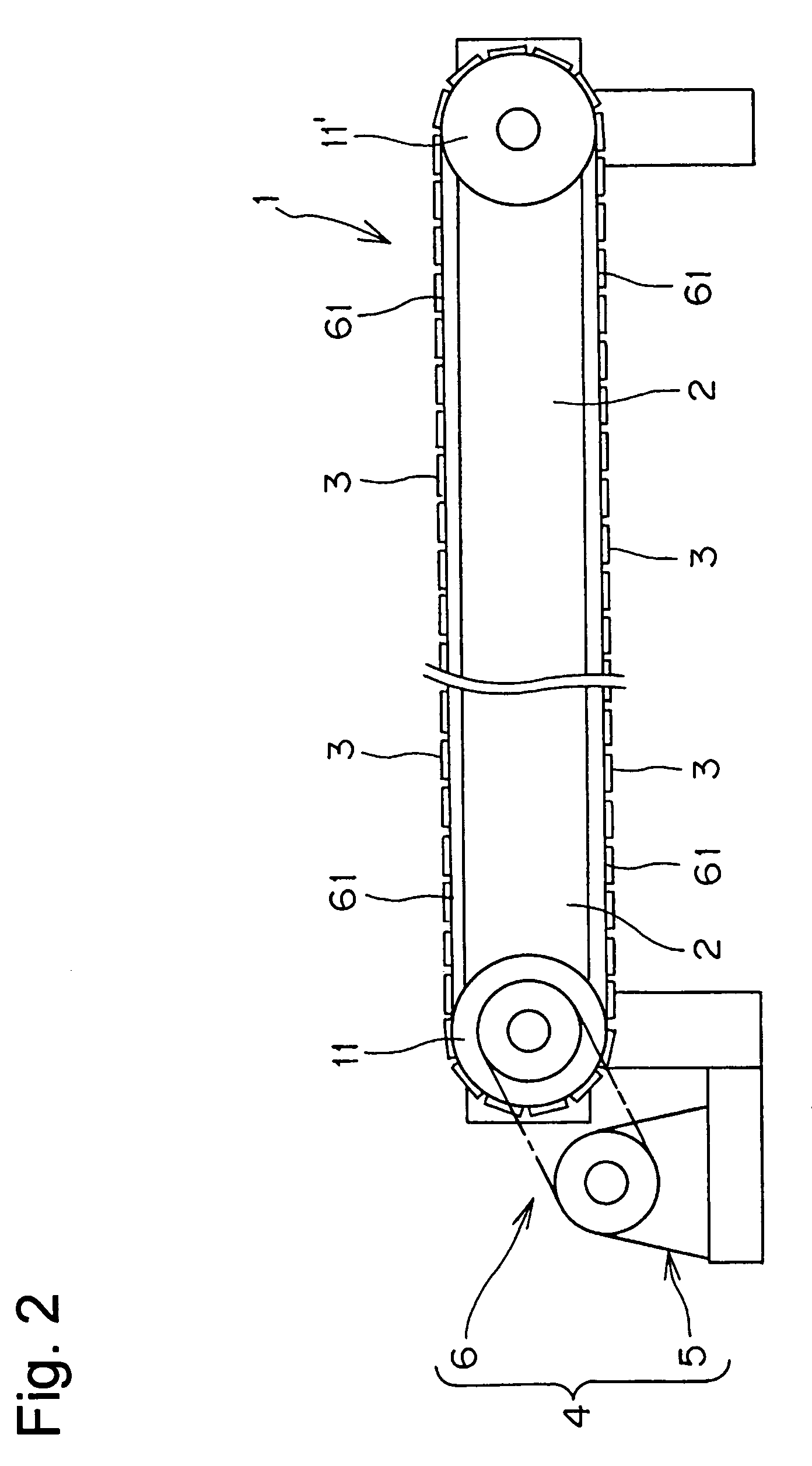Conveyance system
a technology of conveying system and chain, which is applied in the direction of driving chains, gearing, hoisting equipment, etc., can solve the problems of difficult assembly work, and large pulsations and speed variations of chains, so as to improve riding comfort and facilitate disengagement , work can be carried out more effectively
- Summary
- Abstract
- Description
- Claims
- Application Information
AI Technical Summary
Benefits of technology
Problems solved by technology
Method used
Image
Examples
first embodiment
[0033]The sprocket 11, in accordance with the invention, has a tooth form as shown in FIG. 4, each tooth 15 having opposite tooth surfaces 12a and 12b.
[0034]The teeth 15 are separated by tooth gaps 14, and the front tooth surface 12a of each tooth, and the facing back tooth surface 12b of a next tooth are continuous with the bottom of a tooth gap between the teeth.
[0035]Further, in the tooth form shown in FIG. 4, the front tooth surface 12a and the back tooth surface 12b are symmetrical with respect to the center line x of the tooth 15, which is a radial line extending from rotational center O of the sprocket 11 (see FIG. 3) and the center of the root of the tooth 15.
[0036]As seen in FIG. 4, the tooth surfaces 12a and 12b are both in the form of a concave curved surface. Moreover, the tooth bottom 13 is in the shape of an arc having a radius ri13 centered on the pitch circle pc. The concave tooth surfaces 12a and 12b are smoothly continuous with the arcuate tooth bottom.
[0037]The d...
second embodiment
[0043]In a slat conveyor according to the invention, the driving and driven sprockets have the tooth configuration shown in FIG. 7. Since the driving and driven sprockets have the same tooth forms, only the driving sprocket 21 will be described.
[0044]Each tooth 25 has front and back tooth surfaces 22a and 22b respectively, and the teeth are separated by tooth gaps 24, having a tooth gap bottom 23 which is smoothly continuous with the facing front and back surfaces of adjacent teeth. The front tooth surfaces 22a and the back tooth surfaces 22b are symmetrical with respect to the center lines x of the teeth 25. The tooth surface 22a and the tooth surface 22b are each in the form of a convex curved surface. The tooth bottom 23 is arc-shaped, with a radius ri23. The tooth surfaces 22a and 22b are smoothly continuous with the tooth bottom 23.
[0045]The distances from the center line x of the tooth 25 to the front tooth surface 22a in the rotational direction of the sprocket, and also from...
third embodiment
[0048]In a slat conveyor according to the invention, the driving and driven sprockets have the tooth forms shown in FIG. 8. Since the driving and driven sprockets have the same tooth forms, only the driving sprocket 31 will be described.
[0049]Each tooth 35 has front and back tooth surfaces 32a and 32b respectively, and the teeth are separated by tooth gaps 34, having a tooth gap bottom 33 which is smoothly continuous with the facing front and back surfaces of adjacent teeth. The front tooth surfaces 22a and the back tooth surfaces 22b are symmetrical with respect to the center lines x of the teeth 35. In this embodiment, the tooth surface 32a and the tooth surface 32b are in the form of parallel planes. The tooth bottom 33 is arc-shaped, with a radius ri33. The tooth surfaces 32a and 32b are smoothly continuous with the tooth bottom 33.
[0050]In this embodiment, the distances from the center line x of the tooth 35 to the front tooth surface 32a, and to the back tooth surface 32b, are...
PUM
 Login to View More
Login to View More Abstract
Description
Claims
Application Information
 Login to View More
Login to View More - R&D
- Intellectual Property
- Life Sciences
- Materials
- Tech Scout
- Unparalleled Data Quality
- Higher Quality Content
- 60% Fewer Hallucinations
Browse by: Latest US Patents, China's latest patents, Technical Efficacy Thesaurus, Application Domain, Technology Topic, Popular Technical Reports.
© 2025 PatSnap. All rights reserved.Legal|Privacy policy|Modern Slavery Act Transparency Statement|Sitemap|About US| Contact US: help@patsnap.com



